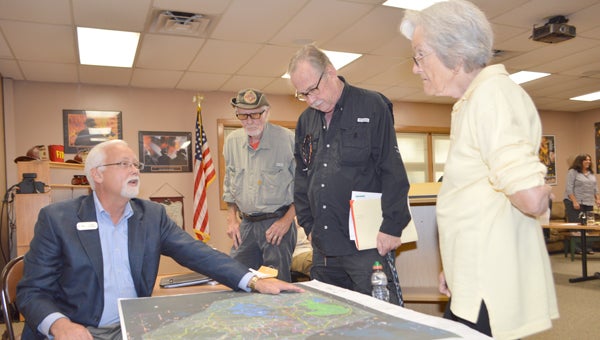Duke received 9k comments on modernization project
Published 11:11 pm Thursday, September 17, 2015
By Leah Justice
leah.justice@tryondailybulletin.com
Tryon Town Council this week sat down with Craig DeBrew, Duke Energy district manager, to learn more about Duke’s Western Carolinas Modernization Project.
The meeting occurred on Tuesday, Sept. 15 with both residents and council members asking questions to DeBrew about the project. See the Thursday, Sept. 17 issue of the Bulletin for further coverage of the meeting.
DeBrew said Duke Energy considers it a privilege to provide power to the area and spoke of its beauty as well as the area’s growth over the last several years.
The process of the modernization project has included public meetings with DeBrew saying Duke Energy has received 9,000 public comments through various sources. He said those comments will rate in the score of which route Duke Energy chooses when it makes applications to the utilities commissions for approval of the project. Duke Energy has mapped several potential routes with some cutting through Polk County for a new 230 KV transmission line connecting Asheville to Campobello.
DeBrew said the most commonly asked questions have been how did Duke come up with these routes, what process will Duke use to select the preferred route, and why Campobello.
In the past four decades, DeBrew said, Duke’s customers’ electricity use in the area has doubled and the demand for electricity in the region is expected to grow by more than 15 percent in the next decade.
DeBrew asked commissioners to think back to Feb. 20 this year when temperatures plummeted to zero degrees in the area. He said users that day set a record for all time electricity consumption. On a day like that Duke doesn’t have enough capacity at the Asheville plant, DeBrew said.
“So the issue that we have that by the time we get to 2019-2020, we’re not going to have enough capacity,” said DeBrew.
The region currently must import approximately 400 megawatts of power during peak demand periods to ensure reliability, according to DeBrew. DeBrew also said this region has not had a new transmission substation or major transmission line since the 1970s.
The purpose of the project, DeBrew said, is to retire the Asheville coal units and to build a clean natural gas plant. Solar power will also be installed on available flat land in the 2022 timeframe, he said.
Economic benefits to having a natural gas plant include a $100 million in upgrades planned for dry coal ash handling and new oil units by 2019 are cancelled.
The new gas plant can produce electricity 35 percent cheaper than the existing coal plant; there will be 800 new construction jobs created in 2017 and 2018 (600 for new gas plant and 200 for the transmission line); the base rate impacts will be included in the 2018-2020 timeframe and long-term fuel costs are expected to be much less and will partially offset rate impacts.
DeBrew said the basic need for the project is Duke Energy needs more capacity and to the south of Asheville is the most probable way to go.
“If you look to the south we have what you might call the electricity super highway,” said DeBrew. He said what Duke has to do is look at things they have to avoid, such as occupied home sites, historical sites, conservancies and wetlands.
“That’s why we asked the public to tell us about these sites,” said DeBrew. “Our goal here is to find a route from point A to point B that is going to have the least impact.”
DeBrew mentioned the public meetings held over the summer and said Duke will use that information, join segments together and attempt to identify a route that will have the least impact. He said originally the date to choose the route was set for January 2016 but because of the impact, Duke has pulled resources to move that date to the first week of October. Once the route is chosen, DeBrew said Duke will first send correspondence to people affected and then Duke will make the route public. In January, Duke plans to submit applications to the utility commission with the route selected, information scoring the segments and information from the public.
“In my mind the commission’s role is to answer is this project really needed, has Duke answered the question to the real problem and if the transmission line is the line with the least impact.” DeBrew said.
DeBrew said it should take the utilities commission about six months to go through its process, which will include hearings to make its decision.
Duke Energy’s plans include to begin to seek project approvals, permits and agreements and start pipeline construction in 2015; begin construction of the new natural gas plant and the transmission infrastructure in 2016; to complete the gas pipeline, transmission infrastructure and the new natural gas plant in 2019 and to retire the Asheville plan coal units and begin to install a solar generating facility in 2020.
The deadline to submit public comments was Aug. 31 but DeBrew gave out the following information for public inquiries and more information: www.duke-energy.com/western-carolinas-modernization; WCTransmissionEnhancements@duke-energy.com and 888-238-0303.






